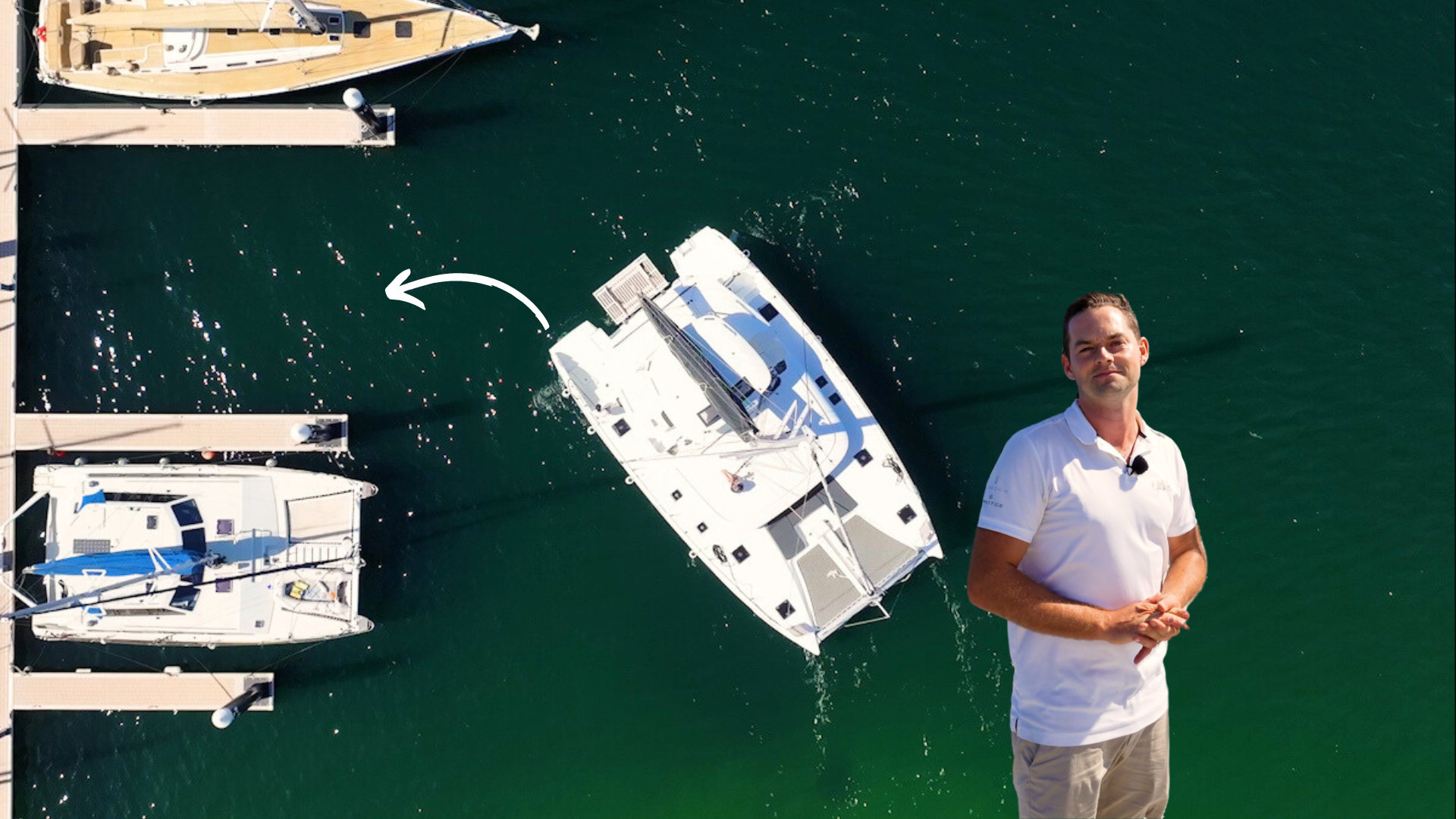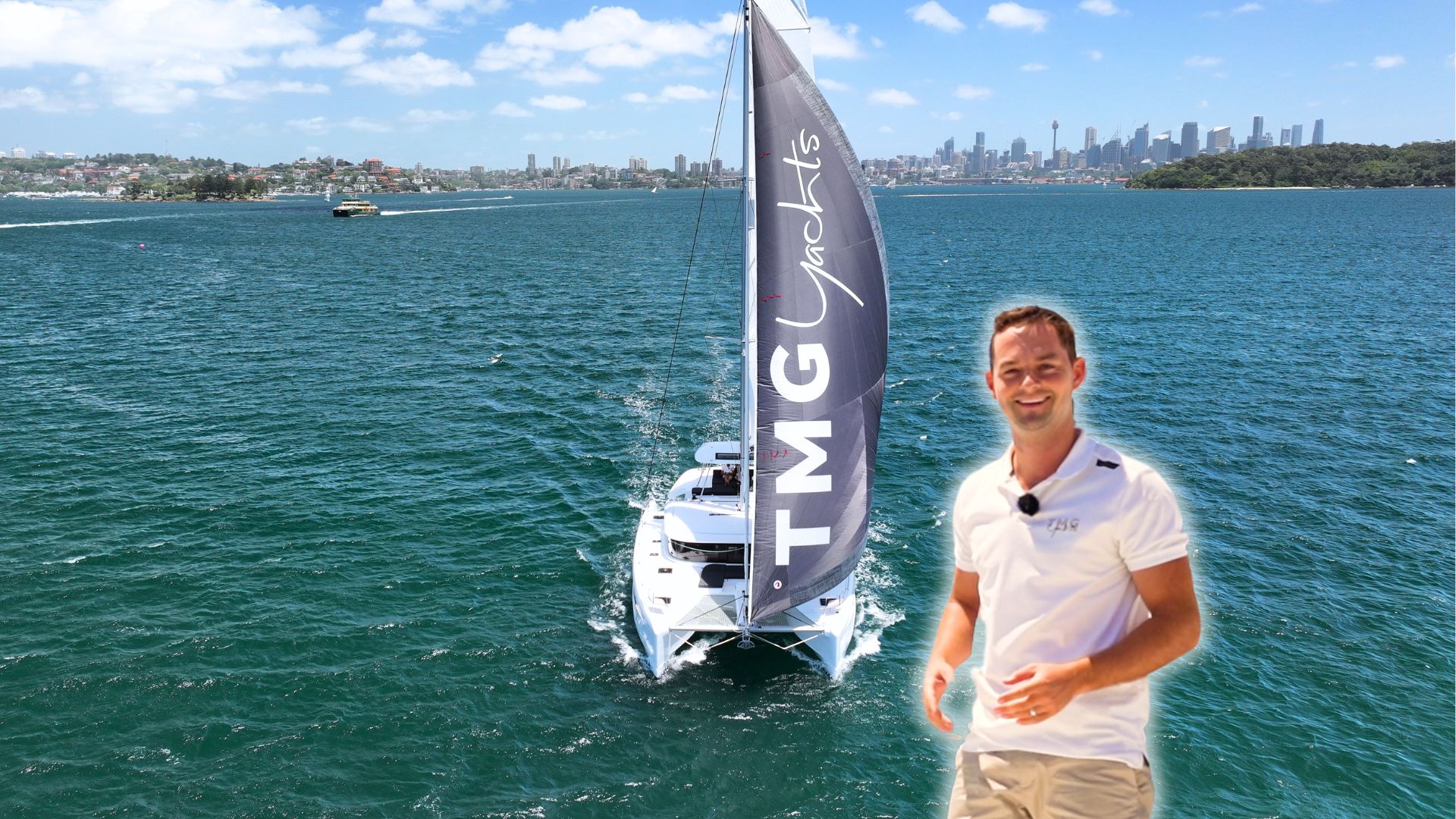How to Fly an Asymmetric Spinnaker on a Catamaran
Inspire and Learn Sailing Techniques: How to Fly an Asymmetric Spinnaker
Discover the art of how to fly an asymmetric spinnaker.
Flying an asymmetric spinnaker on a catamaran is a rewarding experience that can greatly enhance your sailing capabilities, especially in downwind conditions. This guide will provide you with a step-by-step approach to setting up, hoisting, trimming, gybing, and dropping the spinnaker.
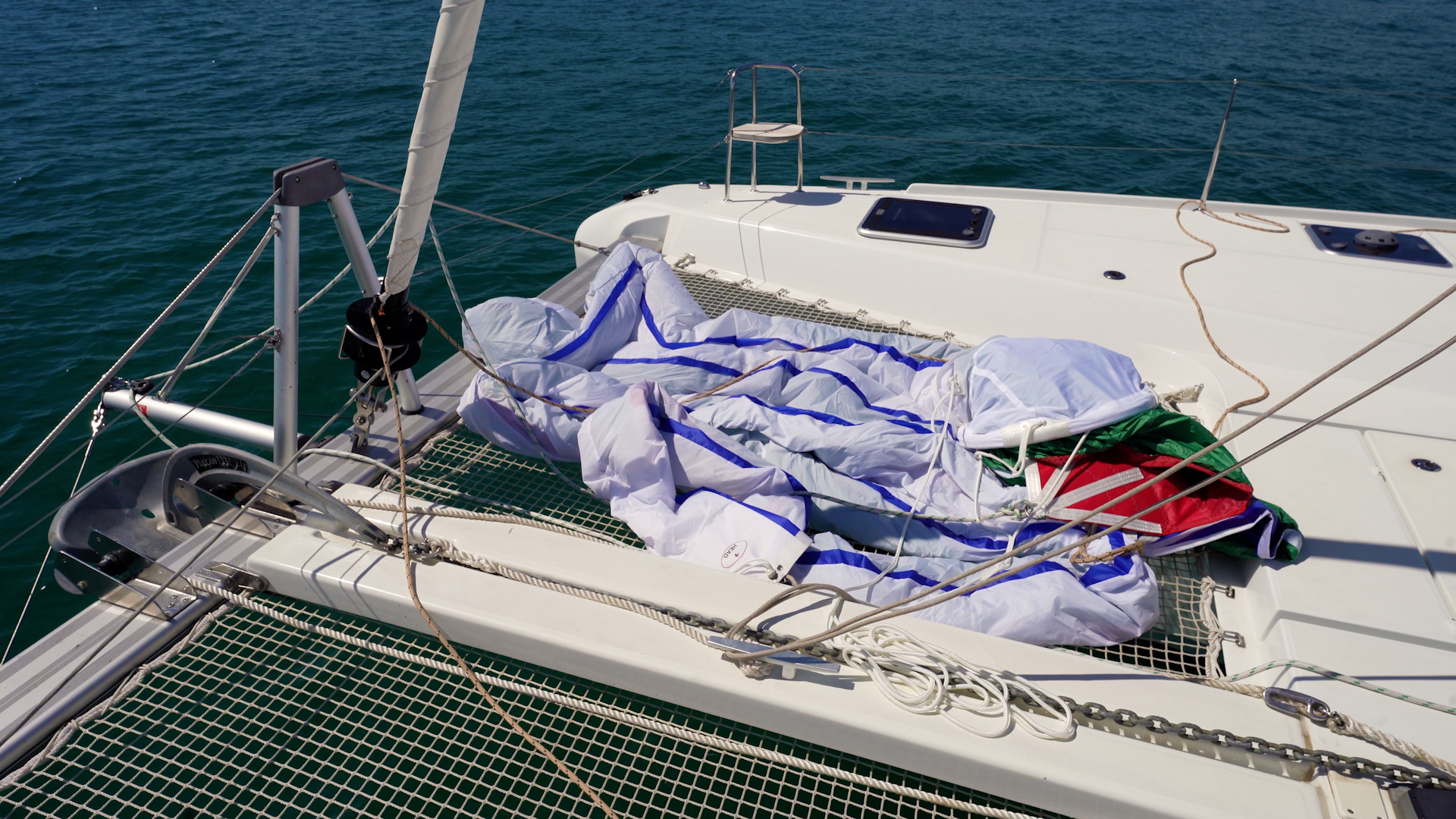
THE SET UP
The setup is crucial for a successful spinnaker flight. Here’s what you need to do:
- Sheet Setup: Ensure that the sheets run all the way to the back of the boat, outside of everything. This helps in preventing tangles and facilitates smoother maneuvers.
- Sail Corners: The spinnaker has three corners:
- Head: Connects to the halyard.
- Tack: Connects to the bowsprit.
- Clew: Connects to the sheets used for trimming the sail.
- Snuffer and Snuffling Lines: The sail is flaked back and forth in a snuffing sock, which helps in controlling the sail during hoisting and dropping. Ensure the sock is not twisted to prevent knots.
HOISTING THE SAIL
Before hoising the asymmetric spinnaker ensure the mainsail is hoisted.
Hoisting the asymmetric spinnaker requires coordination among the crew and precise positioning:
- Wind Angle: Position the boat at a 160-degree wind angle, so that this sock is behind the wind shadow of the mainsail.
- Crew Positions:
- Mast: One crew member pulls up the halyard slowly.
- Helm: Another crew member tails the halyard on the winch.
- Bow: A third crew member feeds the sock, keeping tension and ensuring no twists.
- Fully Hoisted: Ensure the sail is fully hoisted and pull the tack line forward for optimal sail shape to prepare for unfurling the sail.
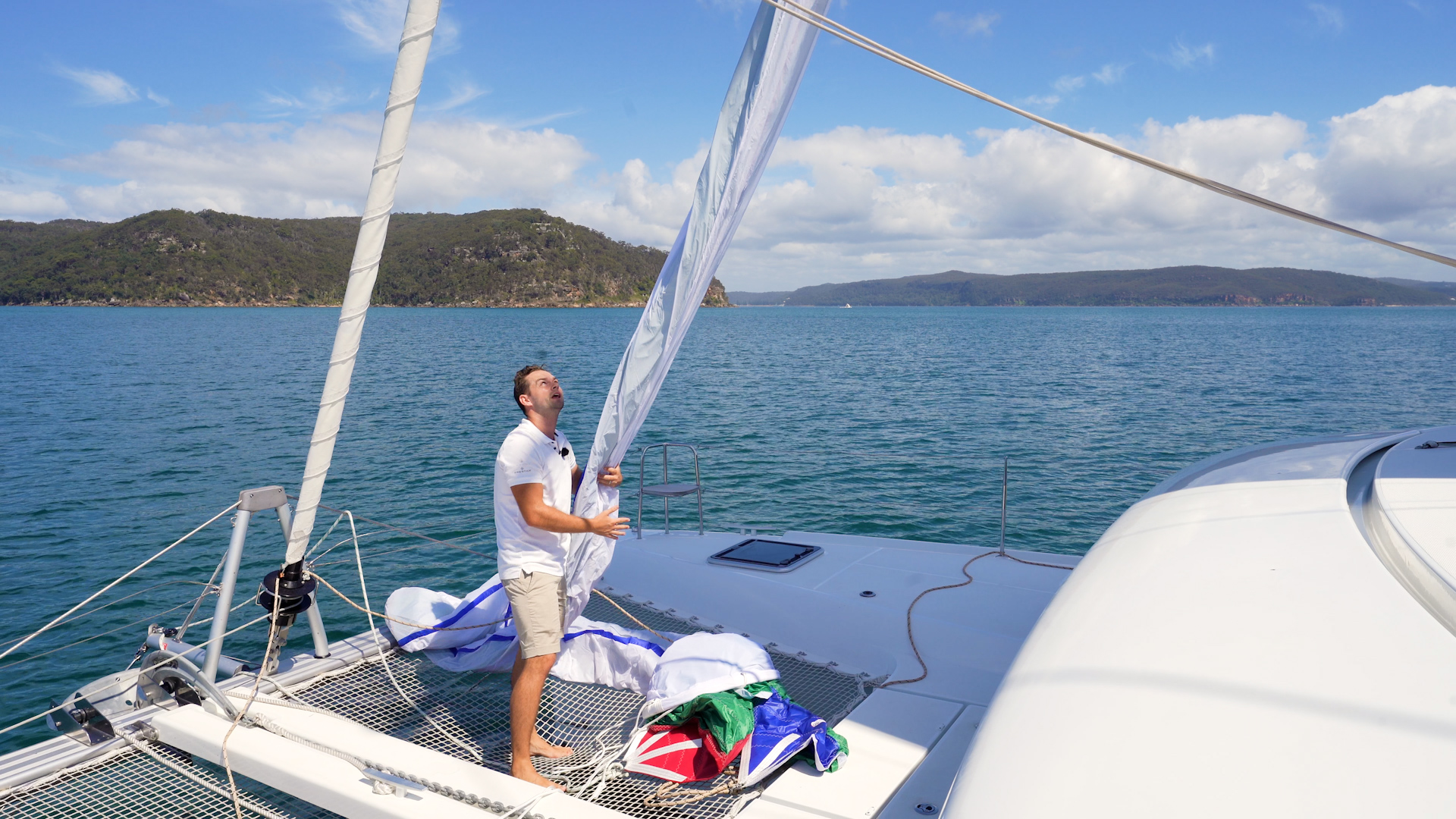
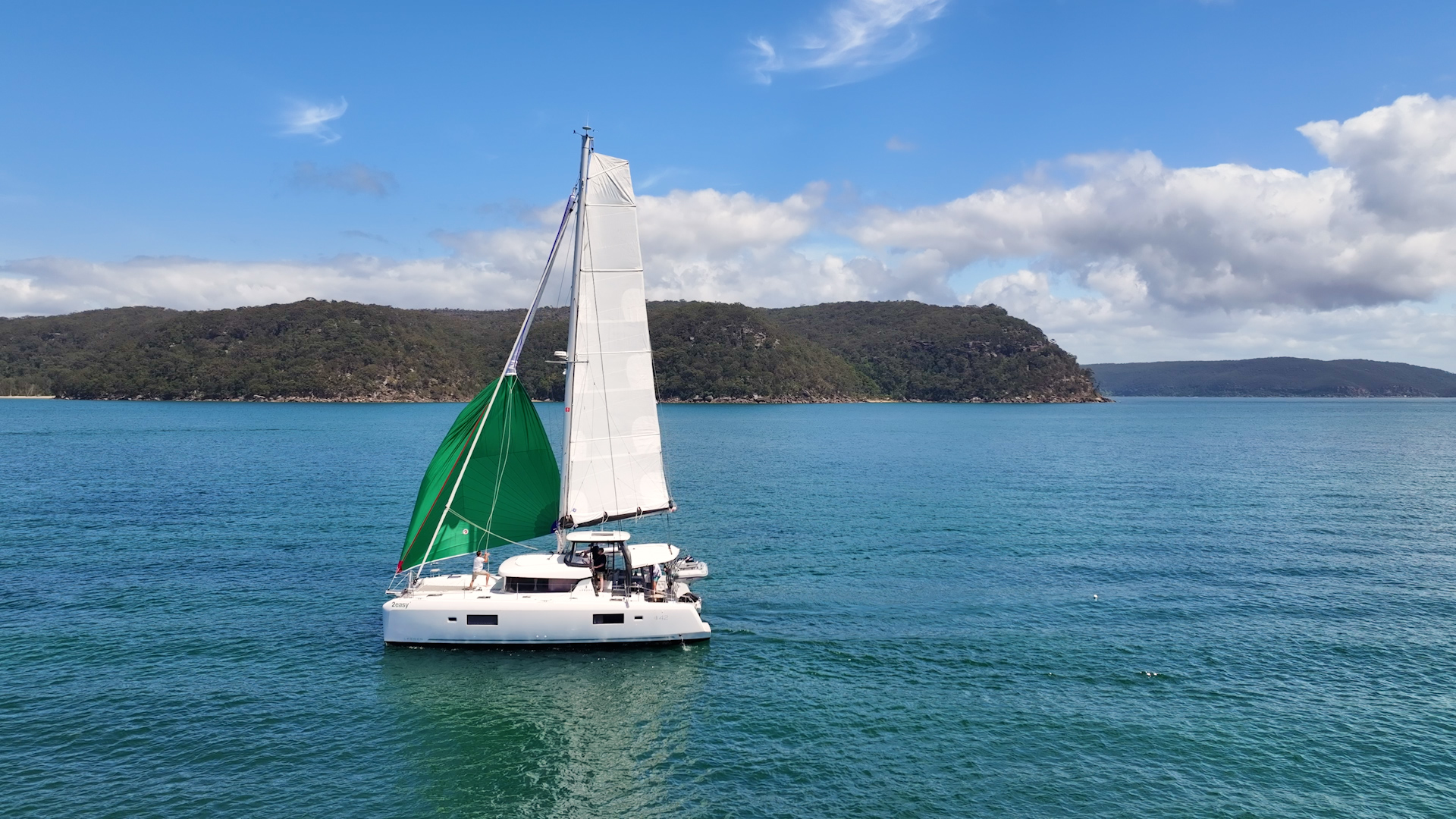
RELEASING THE ASYMMETRIC SPINNAKER
To release the spinnaker and catch the wind effectively:
- Wind Angle: Adjust the boat to a 120-degree wind angle to increase apparent wind.
- Crew Positions:
- Sheet Winch: The crew member on the side where the sail will be pulled out (starboard or port).
- Snuffing Line: Another crew member ready to pull the sock up.
- Steps: Pull on the sheet and snuffling line quickly to deploy the sail.
WHEN TO USE THE ASYMMETRIC SPINNAKER
The asymmetric spinnaker is ideal for various conditions:
- Offshore Passage Making
- Traveling Downwind
- Light Wind and Calm Sea States (always check your manual)
- Not in Confined Waterways
TRIMMING
Proper trimming ensures optimal performance:
- Let Out: Let the sail out as far as possible.
- Luffing: When it begins to luff, pull it in slightly.
- Wind Angle: Adjust course to a wind angle between 120-160 degrees.
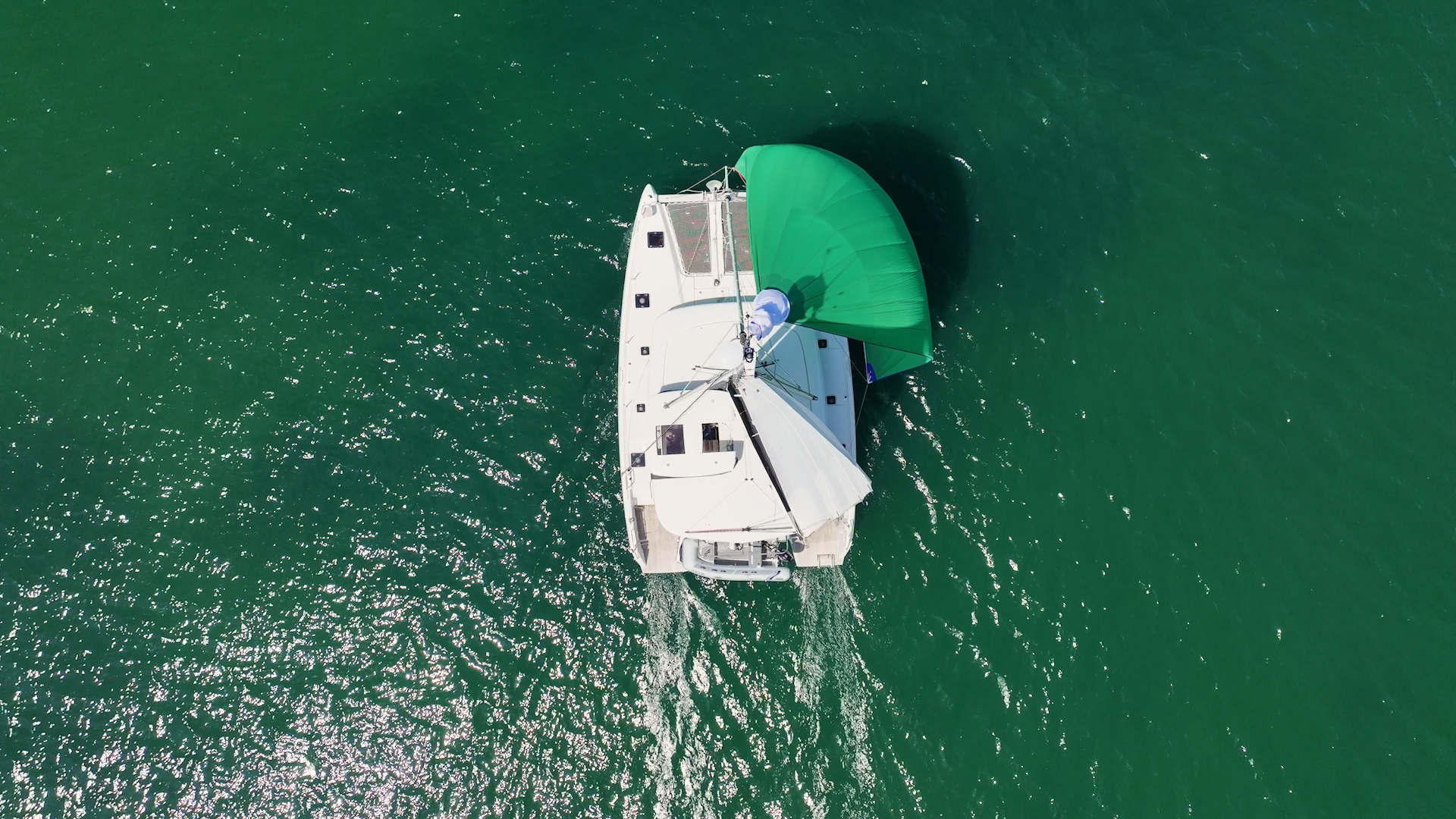
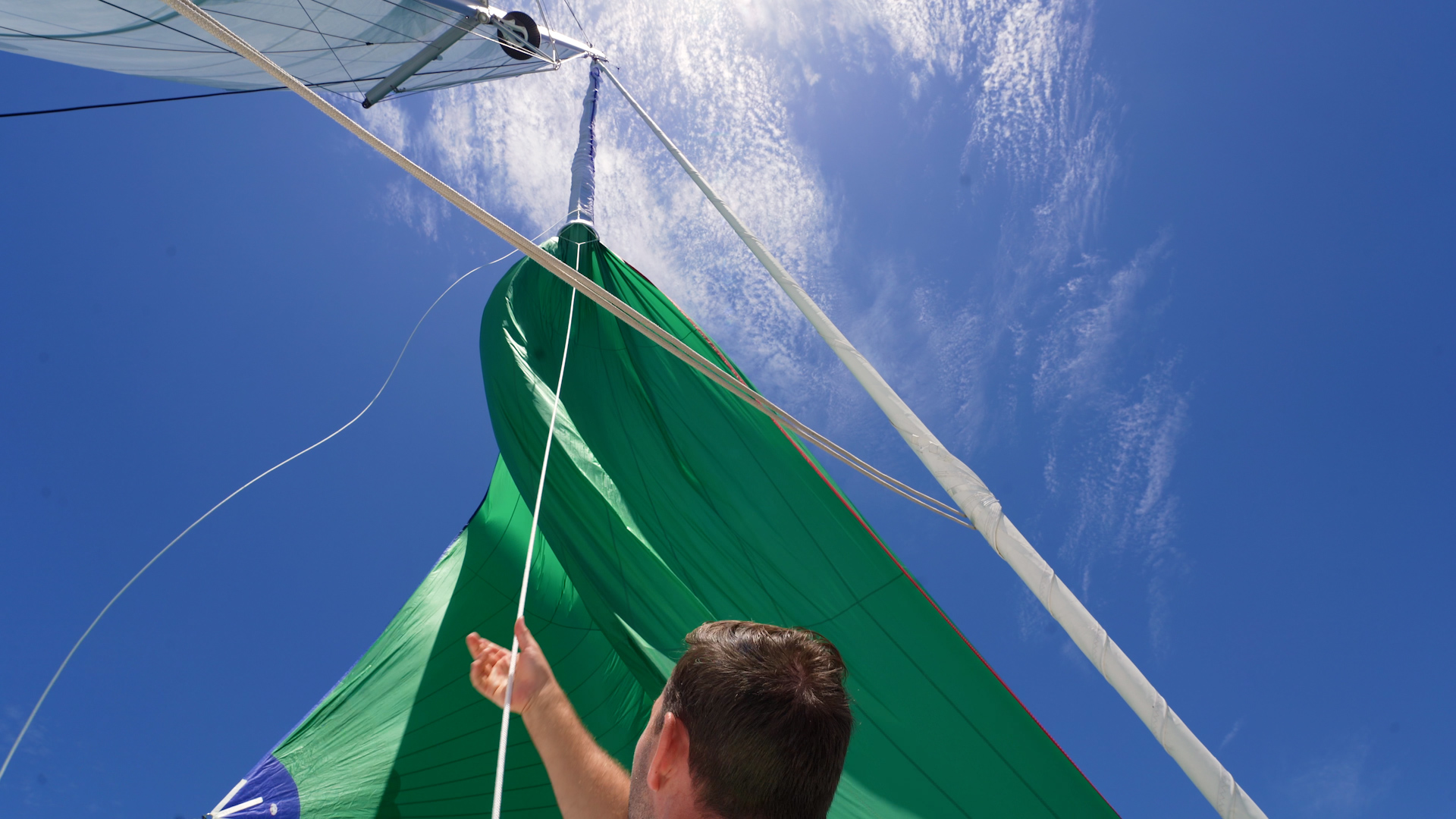
HOW TO GYBE
1. Cruising Gybe
A cruising gybe is the recommended gybe for most people, it is more relaxed and requires less crew members. You could take 20 minutes performing a cruising gybe and it would be okay.
Part 1 – Snuffing the Sail
- Snuffer Line: Ensure snuffing line is on the leeward side of the forestay (same side as sail)
- Sheet: Ease the active sheet.
- Snuffing Line: Pull this snuffing line to the sail back into the sock.
Part 2 – Preparing for New Tack
- Helm: Turn the boat to gybe the mainsail.
- Sock/Sail: Move it to the other side, taking it around the forestay while the boat is downwind.
- Lines: Move all sheets and lines to the new side, ensuring they are free to run.
Part 3 – Releasing the Sail
- Execution: Repeat the steps for releasing the asymmetric spinnaker.
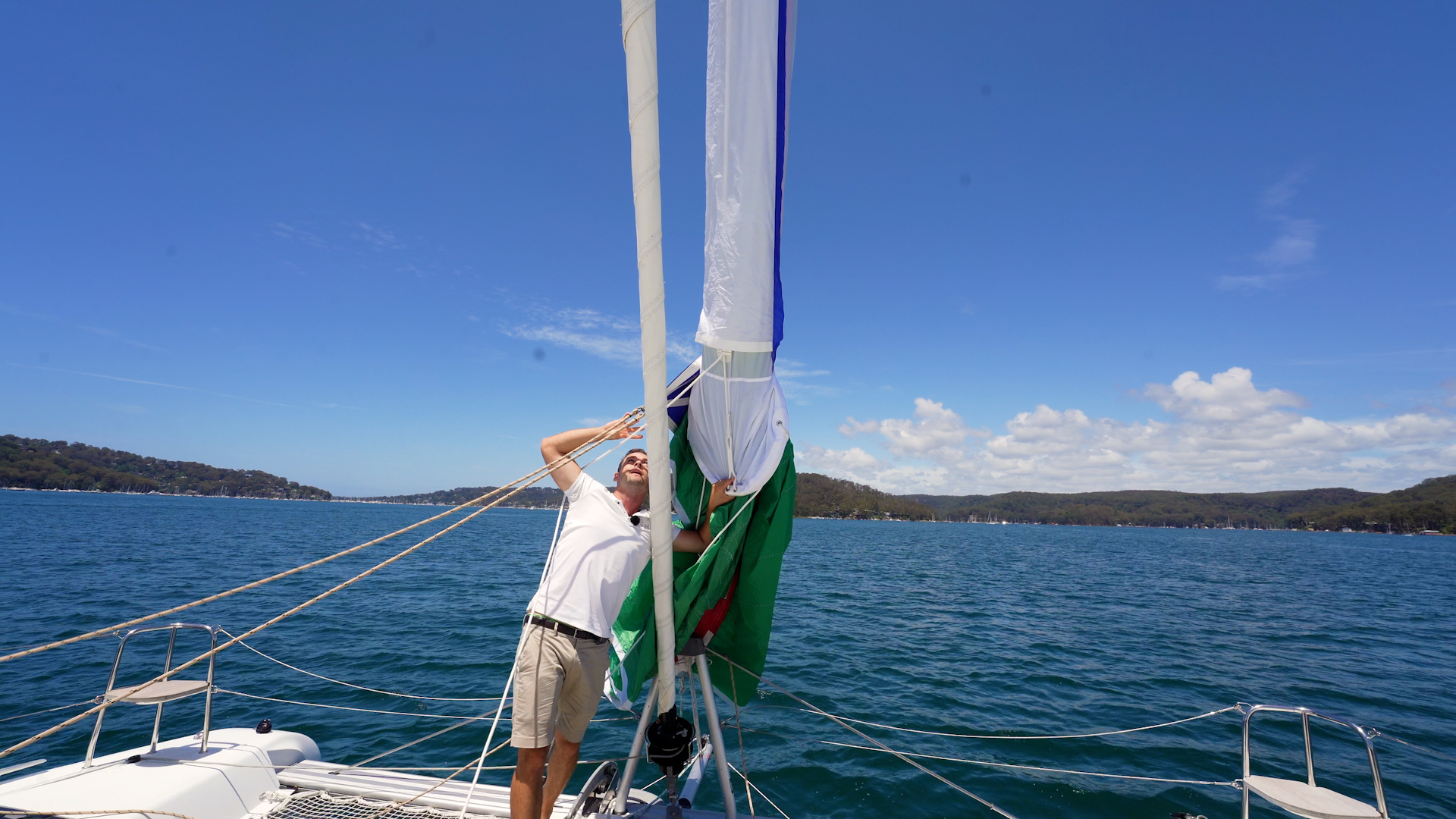
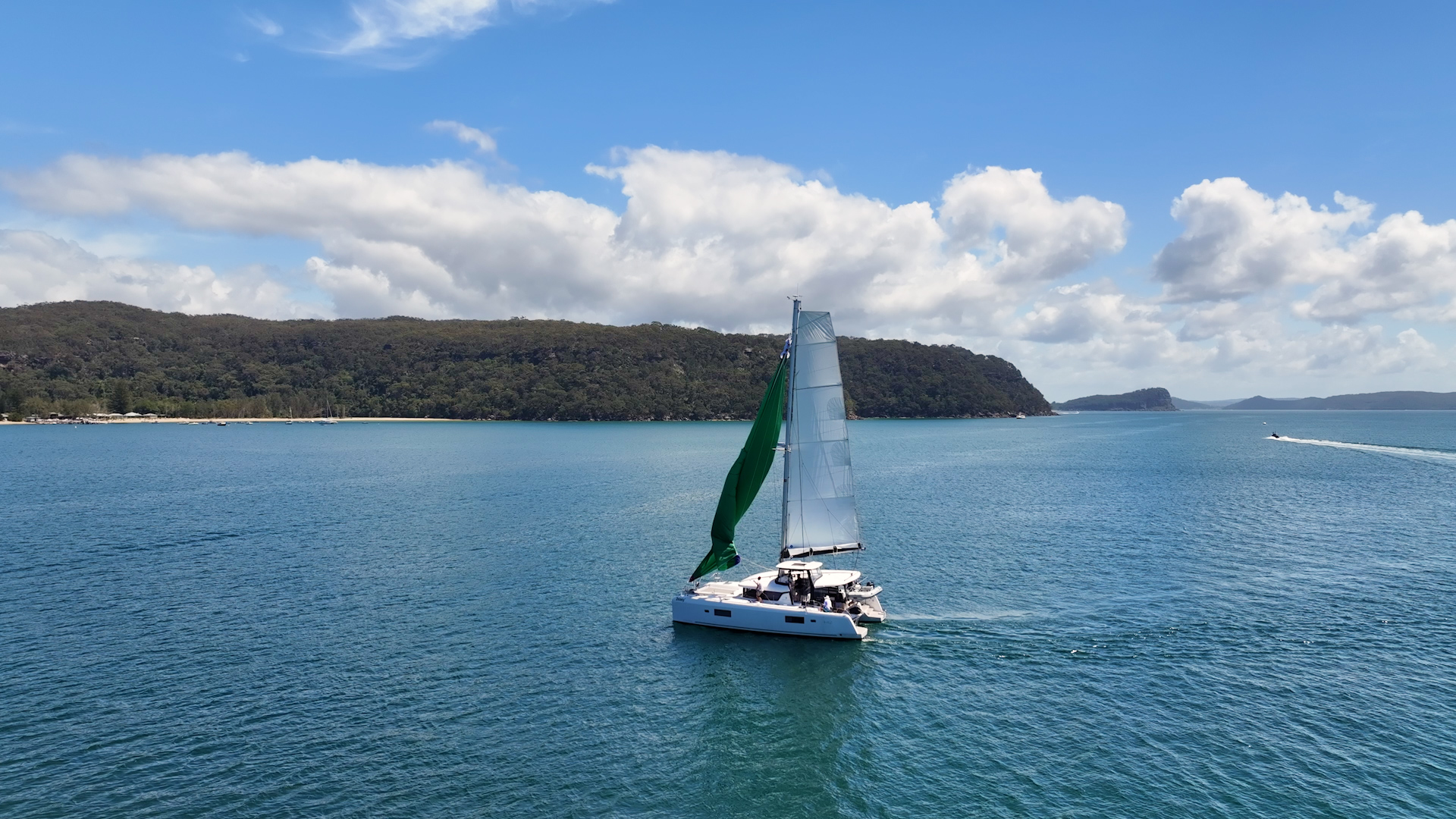
2. Racing Gybe
A racing gybe or an outside gybe is very fast and requires a minimum of 3 people. It is most commonly used when racing.
- Lazy Sheet: Ensure it runs outside the tack line.
- Trimmers: One trimmer eases the active sheet, while the other pulls on the new leeward active sheet.
- The sail will go slack and then go outside of the forestay before setting on the new tack.
- The turn and Gybing of the boat must be done smoothly and slowly to allow the sail to “float” around the front of the vessel.
DROPPING THE ASYMMETRIC SPINNAKER
To drop the spinnaker smoothly:
- Crew Positions:
- Helm: Eases the halyard in a controlled manner.
- Foredeck: Pulls the sail down neatly. You may choose to have 1 or 2 people in this position.
- Steps: Drop the sail directly into a bag or flake it back onto the deck.
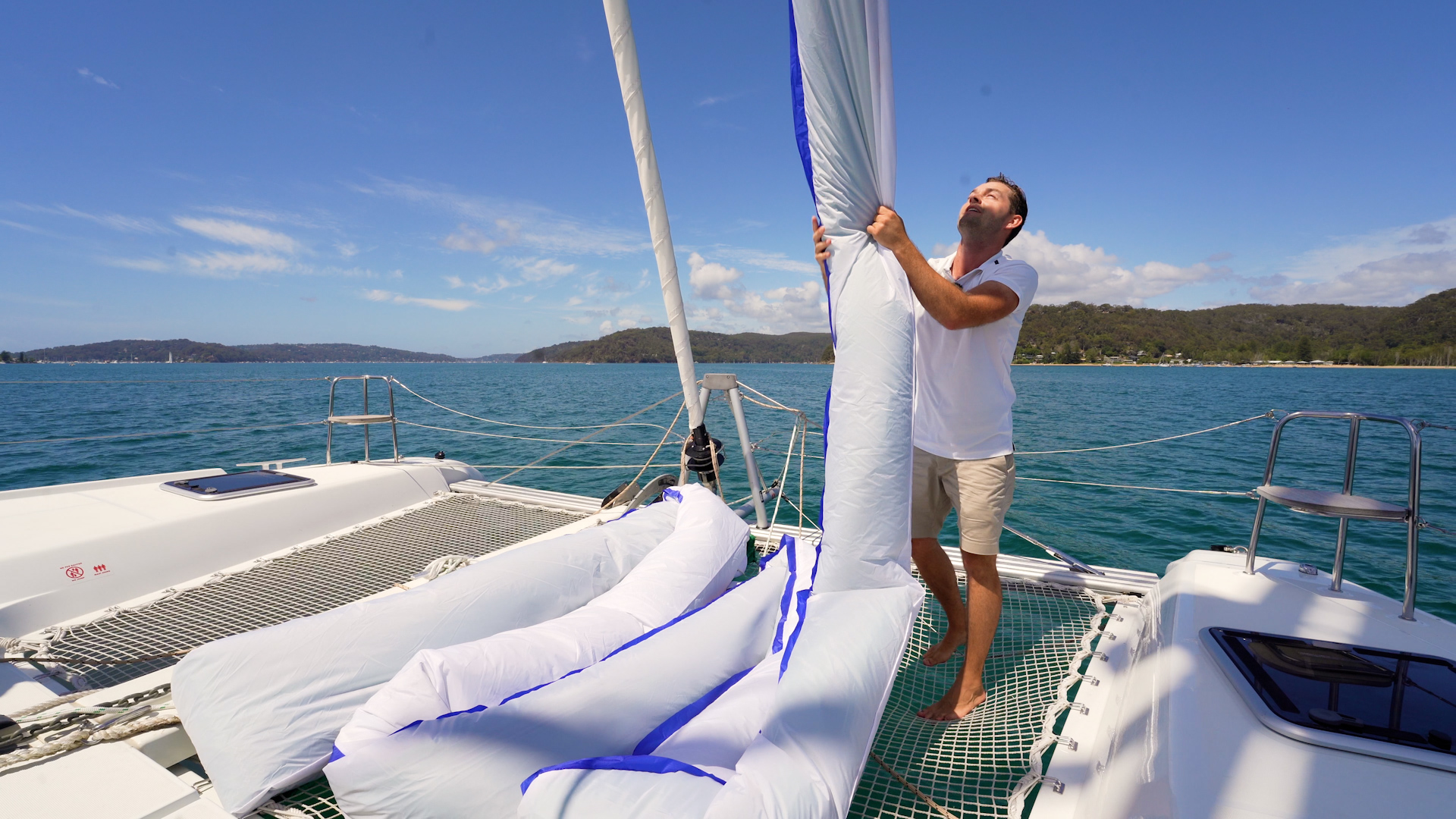
Flying an asymmetric spinnaker on a catamaran enhances your sailing experience, particularly for downwind passages. With practice, you can master the setup, hoisting, trimming, gybing, and dropping processes, making your sailing adventures more enjoyable and efficient. Always refer to your specific boat’s manual for detailed instructions and be sure to remain with the wind parameters outlined by your sail manufacturer. We hope this has helped you be confident on how to fly an asymmetric spinnaker.
LATEST FROM THE INSPIRE AND LEARN SERIES
Master Catamaran Sailing with Lagoon Campus
Launching in 2025, TMG Yachts introduces the Lagoon Campus—a tailored training program designed to upskill future Lagoon catamaran owners.
How to Dock in a Crosswind on a Catamaran (in a tight space)
In this episode, join Joe Fox as he walks you through the intricate process of docking a catamaran in a tight berth with a crosswind.
How to Fly a Code Zero on a Catamaran
In this guide, we delve into the intricacies of flying a Code Zero on a catamaran, specifically the Lagoon 46. Join our expert, Joe Fox, as he walks you through the setup, preparation, and manoeuvres involved in harnessing the power of this versatile sail.


